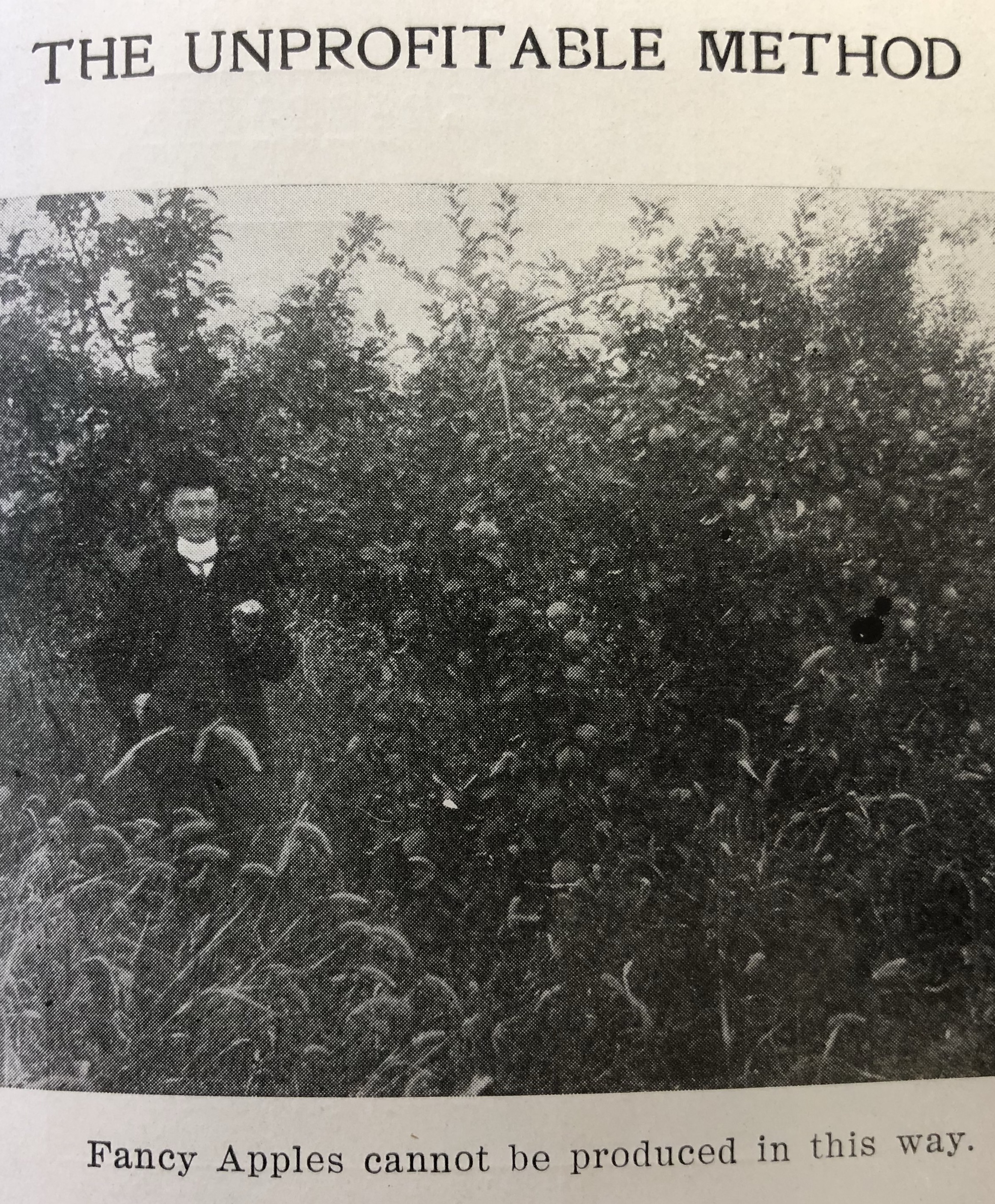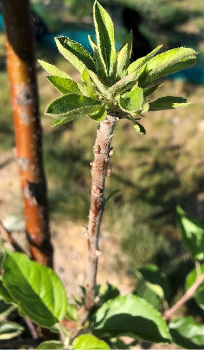Fertility

PHOTO: “The Unprofitable Method” in The Bitterroot Valley: The Land of the McIntosh Red. The Board of the County Commissioners of Ravalli County. 1908.
All living things need food, and your tree is no exception. Trees receive their food from two sources: the sun, via photosynthesis, and the soil, which contains important nutrients for root and bud development, fruit production, and defense against pests and diseases.
If your tree is significantly crowded by other vegetation, including weeds, other trees, and shrubs, remove the competing vegetation (as possible) to allow the tree greater access to sunlight and nutrients. Be careful not to remove too much shading vegetation at once during summer months, as this can "shock" trees suddenly receiving a flood of sunlight. Also remember, in their native habitat, apple trees are forest trees and can handle other vegetation around once they reach maturity, however, to avoid girdling from voles and other rodents, vegetation should be kept short and moved shortly before heading into winter to reduce habitat for these pests.
If your main goal for renovating your heritage trees is to harvest quality fruit, you may also consider fertilizing the tree based on a visual examination of the tree’s growth plus information gained from a soil test and/or foliar sampling. A soil test can provide only a small snapshot of what nutrients are available to the tree, as soil samples are rarely taken as deep down as tree roots might be reaching (especially with trees that are 100+ years old). To get a more accurate picture of what nutrients your tree is lacking, you will need to do foliar sampling. At a glance, discolored leaves and poor growth can also indicate the need for certain nutrients.

Example of nutrient deficiency in an apple tree. Whirled leaves and "blind wood" can be indicative of a micronutrient deficiency, in particular Zinc. Foliar testing can determine exactly which deficiencies exist.
The following is a good order of operations to follow for ensuring your trees have what they need for the growing season:
- Do a soil test early in the season to determine what nutrients might be lacking in the soil. Then, follow up with foliar sampling, ideally in late July or early August when the tree is setting its terminal buds. Be sure to send your sample to a trusted lab that has experience analyzing apple leaf samples. For more information on collecting a foliar samples, visit Washington State University’s guide for Leaf Tissue Analysis.
- Add nutrients based on your sampling results, and as recommended by the lab, for a standard bearing tree. If foliar nutrients are recommended, you will need to decide between applying a nutrient foliar spray directly to the tree and applying an alternative source of the nutrient to the soil. Spraying any chemicals, conventional or organic, in large trees can be a risk to the applicator. Seek professional assistance if you do not have experience in or training for applying chemicals.
- After competing vegetation has been cleared, spread compost in the drip line of your trees. Compost contains many beneficial micro and macro nutrients, as well as organic matter that is important for your soil’s structure and health. You do not need to place any compost amendments directly at the trunk of your old trees, as the roots are located farther out from the base of the tree.
- Do not work amendments into the soil through tillage, as you may damage the trees’ root systems.
At the end of the day, fertilizing your trees is a bonus. Remember, your tree has already lived a long life, accessing nutrients by spreading its vast root system all around your orchard. One of the most helpful things you can do for your tree is to protect those roots by reducing disturbance and compaction in the soil. And of course, watering your tree is absolutely vital to its uptake of nutrients, and ultimately crucial to its longevity.

